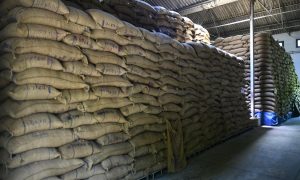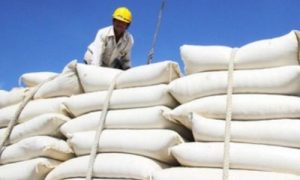Vietnam boosts rice trade through 2030

Vietnam is intensifying efforts to boost rice exports through 2030, focusing on trade promotion, export diversification, and upgraded processing capacity. Authorities urge firms to modernize facilities and build value chains while addressing regulatory and logistical issues. Despite a rise in export volume, revenue dropped due to falling global prices, driven by India’s lifted export ban and market oversupply concerns.
HANOI: To enhance rice exports through 2030, the Industry and Trade Ministry (MoIT) has rolled out a series of new measures focused on stricter oversight, faster implementation of the national export strategy, and stronger trade promotion efforts.
These solutions were introduced by the MoIT’s Export-Import Department during a conference held in the Mekong Delta province of Tien Giang.
Authorities are set to expand negotiations and trade deals with international partners while dismantling the logistical and regulatory snarls that have plagued the sector.
Local authorities were advised to restructure production and develop value chain linkages among organisations, cooperatives, and rice exporters.
Enterprises and traders were encouraged to upgrade deep processing facilities and equipment to churn out rice up to the exacting standards of discerning markets.
The goal is to diversify export markets, reducing dependence on traditional buyers to mitigate associated risks.
Luu Van Phi, director of the provincial Department of Industry and Trade, highlighted Tien Giang’s strategic strengths in rice production, citing its strategic location and robust transport infrastructure, including extensive road and waterway networks.
The province boasts around 200 major rice milling and processing facilities capable of grinding out three million tonnes of rice annually and generating an estimated US$100mil in export revenue.
To ensure the sector’s long-term growth, Phi stressed the need for exporters and traders to develop raw material zones, invest in factory upgrades, modernise production lines, enhance processing capabilities, and strengthen financial capacity.
Building brand identity and gaining consumer trust in both domestic and foreign markets is seen as a critical step forward.
Current rice export regulations, he added, need to be revised to better keep pace with the industry’s evolving needs.
According to the department, Vietnam exported over 3.43 million tonnes of rice in the first four months of this year, raking in nearly US$1.8bil, an 8.1% jump in volume but a 13.3% dip in value from the same period last year.
The Philippines, as ever, remains Vietnam’s largest rice buyer, making up 43.3% of the export volume and 45.5% of the value.
The average export price stood at US$515 per tonne, down 19.8% year-on-year.
While this significant decline might seem concerning, it had been anticipated by industry experts and businesses, especially amid growing global supply.
Many Vietnamese exporters attributed the sharp decline in rice prices to the global market adjustment that began in late 2024.
The lifting of India’s export ban significantly increased supply and exerted downward pressure on prices.
As India steps up exports to reduce record-high stockpiles, the global rice market is expected to remain in a low-price cycle in the near term – a development that poses challenges for Vietnamese exporters in terms of maintaining both profit margins and market share.
In its latest outlook, the United States Department of Agriculture forecast global rice production in the 2025 to 2026 crop year to reach a record 538.7 million tonnes, up one million tonnes from the previous season. Despite the rise in output, supply shortages may re-emerge due to an estimated increase of 6.1 million tonnes in global consumption. — Viet Nam News/ANN
To Read more about Rice News continue reading Agriinsite.com
Source : The Star















